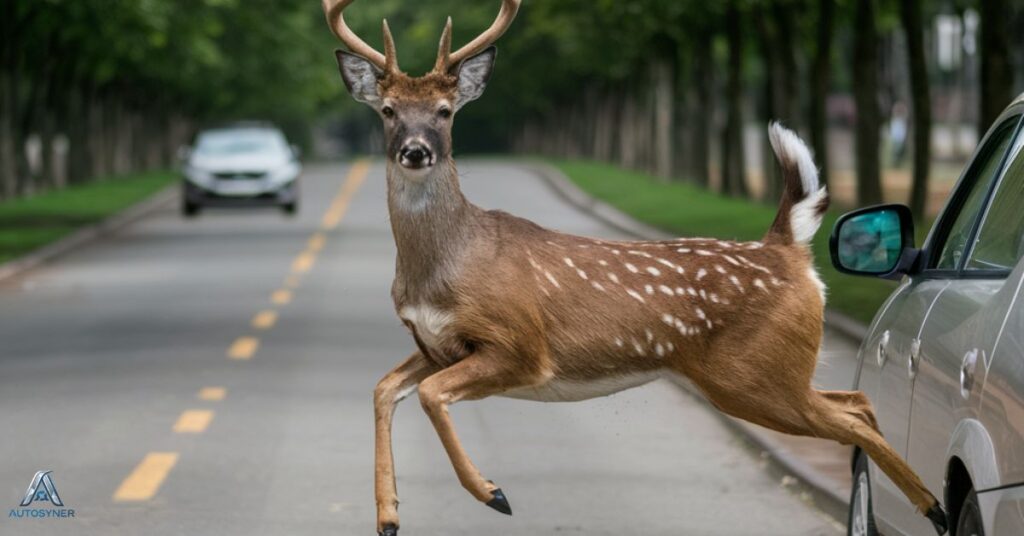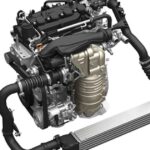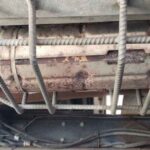Deer collisions with cars are frequent occurrences, posing risks to both motorists and wildlife. Understanding why deer leap into the path of oncoming vehicles is critical for devising effective prevention strategies.
Factors such as habitat fragmentation, seasonal movement patterns, and the innate flight response of deer contribute to these incidents. Exploring these dynamics can lead to measures that enhance road safety and protect deer populations.
Times of Year That Deer Run Into Cars
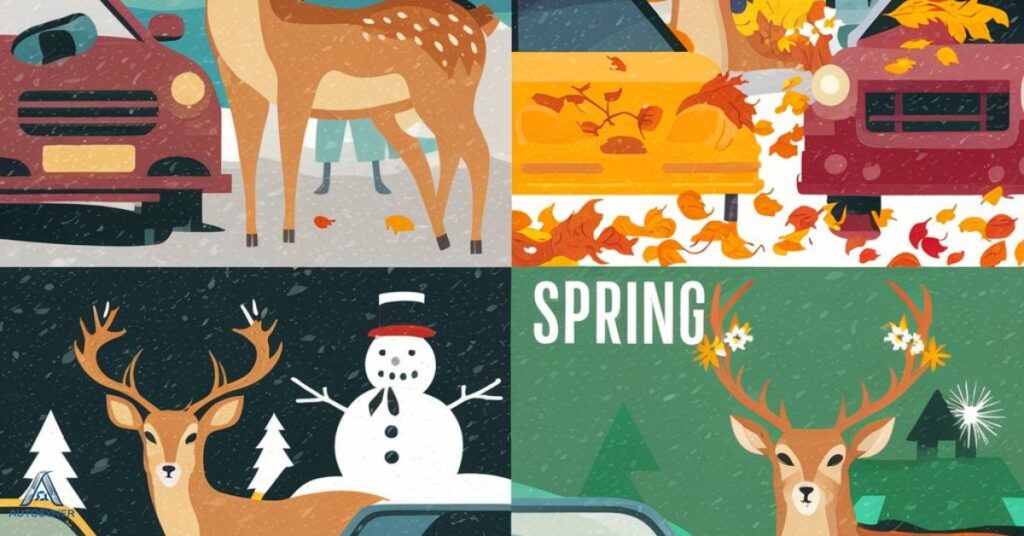
Deer collisions with vehicles often correlate with specific times of the year, reflecting seasonal patterns in deer behavior. Understanding these temporal trends is vital for mitigating the risk of accidents on roadways.
Read This Blog: TAXI LONG AN LONGANTAXI.NET | 8 STEPS TO BOOK YOUR RIDE
Seasonal Movement
- Mating Season (Rut): During the fall months, typically October to December, deer are more active as they seek mates. Increased movement can lead them to cross roads more frequently, heightening the risk of collisions.
- Migration: In regions with significant deer populations, seasonal migrations may occur, particularly during the spring and fall, as deer move between feeding and breeding areas. This movement can coincide with increased road crossings.
Environmental Factors
- Winter Months: Harsh weather conditions and reduced food availability during winter compel deer to forage more extensively, sometimes pushing them into urban areas and across roads in search of sustenance.
- Spring Fawning: In late spring and early summer, does give birth to fawns. During this time, deer may be more protective of their offspring and exhibit unpredictable behaviors near roadways.
Daylight Hours
- Dawn and Dusk: Deer are crepuscular animals, meaning they are most active during the low-light periods of dawn and dusk. Reduced visibility during these times increases the likelihood of collisions with vehicles.
By recognizing these seasonal and environmental factors influencing deer movement, drivers can take proactive measures to minimize the risk of accidents, such as adjusting their driving habits and being vigilant in deer-populated areas.
What Kind of Vision does Deer Have?

Deer possess a visual system that is well-adapted to their natural habitat and behaviors. While not as acute as some predators, their vision serves them well for survival in their environment.
Also Read This Blog: NISSAN ROGUE WON’T START? HERE’S QUICK SOLUTIONS TO THE MOST COMMON CAUSES
Peripheral Vision
Deer have a wide field of view, estimated at around (310) degrees, allowing them to detect movement and potential threats from various directions.
Depth Perception
Their binocular vision, overlapping visual fields from both eyes, provides depth perception, aiding in judging distances accurately, which is crucial for navigating obstacles and evading predators.
Sensitivity to Motion and Low Light
Deer have highly sensitive eyes, particularly to motion, enabling them to detect subtle movements even in dim lighting conditions. This sensitivity helps them remain vigilant against potential threats, including predators and oncoming vehicles, especially during dawn and dusk when visibility is reduced.
Dichromatic Color Vision
Deer have dichromatic vision, meaning they have two types of color receptors (cones) in their eyes, sensitive to blue and green wavelengths. While they may not perceive colors as vividly as humans, they can still distinguish between certain hues.
Overall, the visual abilities of deer are finely tuned to their natural environment, allowing them to effectively detect predators, locate food sources, and navigate their surroundings. However, their vision, particularly in terms of judging the speed and distance of approaching vehicles, can contribute to the risk of collisions on roadways.
Understanding Deer Behavior
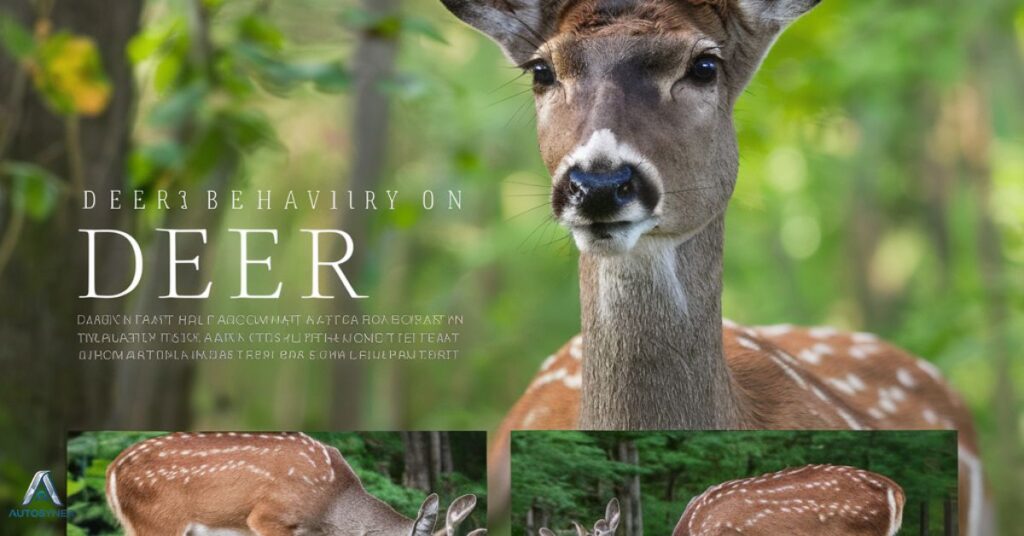
Understanding deer behavior is essential for various reasons, from wildlife management to reducing the risk of collisions on roadways. Deer are fascinating creatures with complex behaviors shaped by their biology, environment, and interactions with other species.
Social Structure
- Deer typically live in small social groups; with females (does) forming matrimonial family units and males (bucks) often solitary outside of mating season.
- During the rut (mating season), bucks compete for mating rights with does, leading to aggressive behaviors and vocalizations.
Feeding Behavior
- Deer are primarily herbivores, feeding on a variety of plant material including grasses, leaves, fruits, and twigs.
- They exhibit selective feeding habits, preferring certain plant species and foraging areas based on factors such as nutritional content and availability.
Movement Patterns
- Deer are crepuscular, meaning they are most active during dawn and dusk when visibility is lower and predators are less active.
- They often follow established travel corridors and utilize cover, such as forest edges and hedgerows, to minimize exposure to predators.
Reproductive Cycle
- The timing of the rut varies by species and geographic location, with factors such as photo period and environmental conditions influencing its onset.
- Does typically give birth to a single fawn or occasionally twins after a gestation period of about six to seven months.
Responses to Threats
- Deer employ various strategies to avoid predication, including fleeing, freezing (remaining motionless), and vocalizing to alert nearby individuals.
- They have keen senses of smell, hearing, and vision, allowing them to detect potential threats from predators and humans.
By gaining insight into deer behavior, wildlife managers can develop effective conservation strategies, hunters can improve their success rates, and motorists can reduce the risk of collisions. Moreover, appreciating the intricacies of deer behavior enriches our understanding of these iconic animals and their role in ecosystems.
The Science Behind Deer’s Response to Vehicles
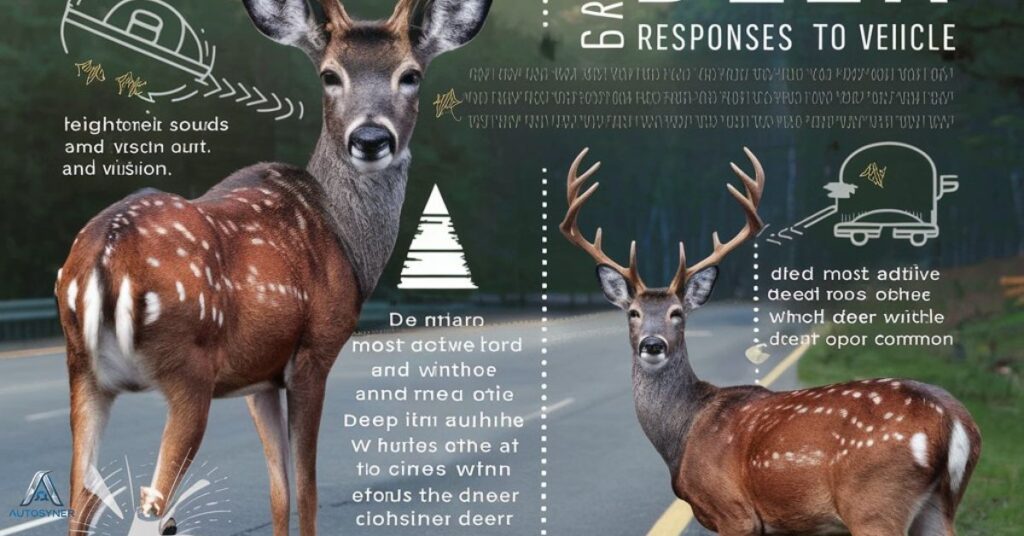
The response of deer to vehicles is a multifaceted phenomenon influenced by a combination of biological, environmental, and behavioral factors. Understanding the science behind deer’s reaction to vehicles is crucial for devising effective strategies to mitigate collisions and ensure the safety of both motorists and wildlife.
Flight Instinct
- Deer possess a strong instinctual response to perceived threats, including vehicles approaching at high speeds.
- When startled, deer are more likely to flee in an attempt to escape danger, often leading them to dart unpredictably across roadways.
Auditory Sensitivity
- Deer have highly sensitive hearing and can detect the sound of approaching vehicles from a considerable distance.
- Loud noises, such as engine revving or tire screeching may startle deer and trigger evasive actions, increasing the risk of collisions.
Visual Perception
- Deer’s visual perception plays a significant role in their response to vehicles, particularly in judging the speed and distance of oncoming traffic.
- However, their ability to accurately assess these factors may be limited, especially during low-light conditions at dawn and dusk.
Habituation
In areas with high traffic volume, deer may become habituated to the presence of vehicles, leading to a decreased fear response and increased likelihood of risky behaviors near roadways.
Individual Variation
- There is considerable variation in the response of deer to vehicles among individuals and populations.
- Factors such as age, sex, experience, and prior exposure to traffic influence how deer react in different situations.
Environmental Context
- Environmental factors, such as habitat characteristics and road design, also play a role in shaping deer’s response to vehicles.
- Vegetation density, proximity to cover, and the presence of wildlife crossings can affect deer behavior and movement patterns near roadways.
By understanding the underlying science of deer’s response to vehicles, wildlife managers, transportation authorities, and motorists can implement targeted measures to reduce the risk of collisions and promote coexistence between humans and wildlife.
This knowledge underscores the importance of adopting proactive approaches to wildlife conservation and road safety.
Why Do Deer Run into Cars?

Deer running into cars is a common occurrence on roadways, often resulting in property damage, injuries, and fatalities for both humans and deer. Several factors contribute to why deer may run into cars.
Habitat Fragmentation
Human development, such as roads and urban expansion, fragments deer habitats, forcing them to navigate through unfamiliar territories and across roads to access food, water, and shelter.
Seasonal Movement
During certain times of the year, such as mating season and winter, deer are more active and prone to moving across roads in search of mates, food, or better habitat, increasing the likelihood of collisions with vehicles.
Poor Visibility
Deer are crepuscular animals, meaning they are most active during dawn and dusk when visibility for drivers is often reduced. This low-light period coincides with high traffic times, amplifying the risk of collisions.
Speed of Vehicles
High vehicle speeds reduce the reaction time available for drivers to avoid collisions with deer that suddenly dart onto the road. Additionally, deer may misjudge the speed and distance of approaching vehicles, leading to fatal collisions.
Startle Response
Deer have a flight response to perceived threats. The sudden appearance of a vehicle or loud noises, such as horns or engine sounds, can startle deer, causing them to panic and run into the path of oncoming traffic.
Lack of Predators
In some areas, reduced predator populations due to hunting or habitat loss may lead to an overabundance of deer. Without natural predators to regulate their numbers, deer populations increase, leading to more frequent encounters with vehicles.
Overall, a combination of habitat loss, human activity, seasonal behavior, and deer’s natural instincts contribute to why deer may run into cars.
Mitigating this issue requires a multifaceted approach, including wildlife corridors, road signage, reduced speed limits in deer-prone areas, and public education on safe driving practices.
How to Avoid Deer Collisions
Avoiding deer collisions requires a combination of awareness, preparedness, and proactive driving techniques. Here are some tips to help motorists minimize the risk of colliding with deer.
- Stay Alert: Pay close attention to road signs indicating deer crossing zones, especially during dawn and dusk when deer are most active. Scan the road ahead and use peripheral vision to watch for movement along roadsides.
- Reduce Speed: Slow down when driving through deer-prone areas, especially on rural roads bordered by forests, fields, or water sources. Reduced speed increases reaction time and improves the chances of avoiding a collision if a deer suddenly appears.
- Use High Beams: Use high beams when driving at night in areas with little or no oncoming traffic. High beams can help illuminate the road and roadside areas, making it easier to spot deer eyes reflecting light.
- Avoid Swerving: If a deer suddenly crosses your path, resist the urge to swerve abruptly to avoid it. Instead, brake firmly while keeping control of your vehicle. Swerving can increase the risk of losing control, colliding with other vehicles, or veering off the road.
- Honk Your Horn: If you spot a deer near the road but it hasn’t crossed yet, use your horn in short bursts to alert the deer and encourage it to move away from the road.
- Be Cautious in Groups: If you see one deer, there may be more nearby. Deer often travel in groups, so slow down and proceed with caution, even after one deer has crossed the road.
- Wear Seat belts: Ensure all occupants of the vehicle wear seat belts at all times. In the event of a collision with a deer, seat belts can help prevent serious injuries.
- Maintain Your Vehicle: Keep your headlights, taillights, and brakes in good working condition. Regular maintenance ensures optimal vehicle performance and improves your ability to react effectively in emergency situations.
- Watch for Signs of Deer: Pay attention to deer warning signs, deer tracks, or other indicators of recent deer activity along the roadside. These signs can help you anticipate potential encounters and adjust your driving accordingly.
By adopting these proactive driving practices and remaining vigilant on the road, motorists can reduce the risk of deer collisions and help ensure the safety of both themselves and wildlife.
Frequently Asked Questions
When are deer most active on roadways?
Deer are most active during dawn and dusk, so be extra cautious during these times.
What should I do if I encounter a deer on the road?
Slow down, honk your horn, and brake firmly but avoid swerving to prevent losing control of your vehicle.
Are there specific areas where deer collisions are more common?
Yes, deer collisions are more prevalent in rural areas near forests, fields, and water sources.
How can I reduce the risk of a deer collision?
Reduce your speed, especially in deer-prone areas, use high beams at night, and stay alert for deer crossing signs.
What should I do if a deer collision is unavoidable?
Brake firmly, hold onto the steering wheel, and try to aim for the deer’s hindquarters to minimize the risk of it crashing through the windshield.
Why shouldn’t I swerve to avoid hitting a deer?
Swerving can lead to losing control of your vehicle, colliding with other vehicles, or veering off the road, resulting in more severe consequences.
Is wearing a seat belt important during a deer collision?
Yes, wearing a seat belt is crucial as it can help prevent serious injuries in the event of a collision with a deer or other obstacles.
Conclusion
The phenomenon of deer jumping in front of cars underscores the importance of proactive measures to ensure road safety. By understanding the factors influencing deer behavior, such as habitat fragmentation, seasonal movement, and the instinctual response to perceived threats, motorists can take steps to mitigate the risk of collisions.
Strategies such as staying alert, reducing speed in deer-prone areas, and utilizing high beams at night are crucial for avoiding accidents. Additionally, ongoing efforts in wildlife conservation, habitat preservation, and public education are essential for promoting coexistence between humans and deer on roadways. With these measures in place, we can work towards minimizing the occurrence of deer-related accidents and creating safer environments for both drivers and wildlife.

